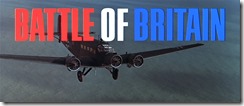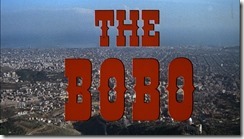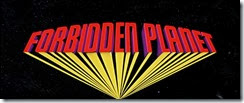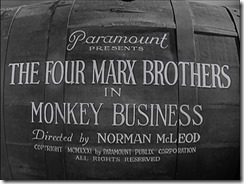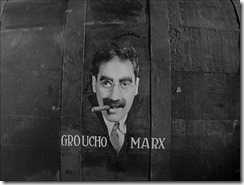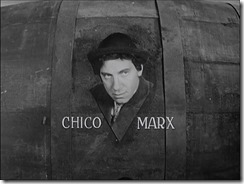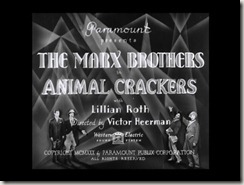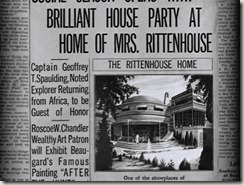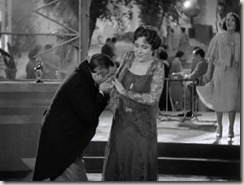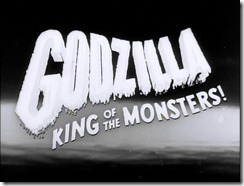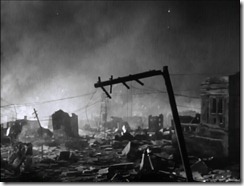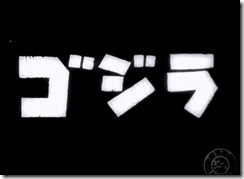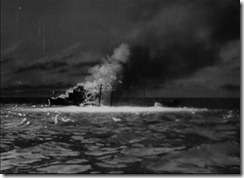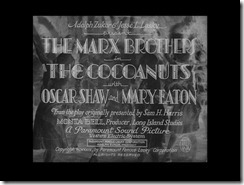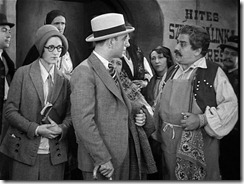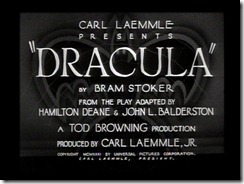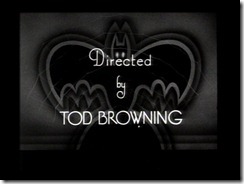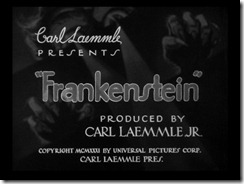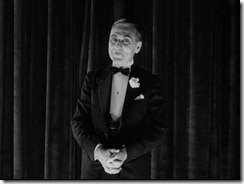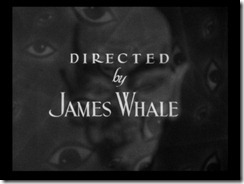Bogey and Bacall. At one point those two names were enough to pack movie theaters and this movie shows why. Filled with an ever twisting plot of blackmail and murder, it was the chemistry between these two that made this movie a true noir classic. But what about the earlier unreleased version shown to soldiers overseas? Read on to find out.

With The Maltese Falcon being a huge hit, Warner Brothers wanted to repeat the success of that private eye picture. The country was still embroiled in World War II and the civilians at home wanted distractions from the war. Also, the popularity of private eye stories were at their zenith.
The legendary directory Howard Hawkes was put in charge of adapting Raymond Chandler’s novel, The Big Sleep. Having Humphrey Bogart play another P.I. was considered a sure thing and the hot starlet of the moment at Warner’s was Lauren Bacall. The fact they were having an illicit affair begun on the set of To Have and Have Not guaranteed there would be on screen chemistry. Hollywood is nothing if not mercenary in the quest for money.
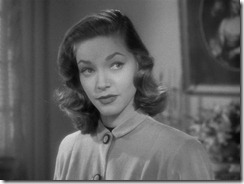
Two versions of the film exist, the 1945 one shown to the troops and the 1946 re-edited one with different scenes. The latter was done at the behest of Bacall’s agent who was in something of a panic over her negative reviews for Confidential Agent. Desperate to salvage her career in a dog eat dog business (and insure his continued income), the agent talked Jack Warner into reshooting the picture to play up the actress’s “insolence.”
I’ll be reviewing both, starting with the 1946 final product.
The 1946 Version
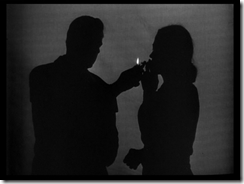
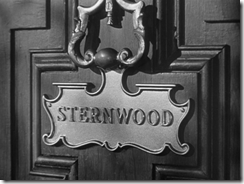
The Big Sleep opens with the silhouettes of Bogey and Bacall lighting up cigarettes with the credits then being superimposed on them – starting with their names. They get shown before the movie title and illustrate just how star power mattered back then. I should also note that this movie has more smoking in it than any I can remember. No specific brand placement, but one would swear it was entirely financed by the tobacco industry.
A close up on the door of a ritzy residence starts things rolling as private detective Philip Marlowe has arrived at the Sternwood Mansion for a possible job. Keep an eye open for lots of close ups of letters and signs in this movie, Hawkes seemed to like them a lot.
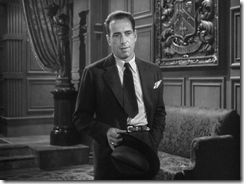
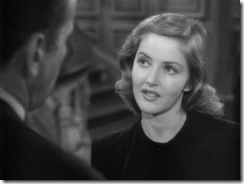
Bogart inhabits the rumpled life of Marlowe effortlessly and brings a jaded weariness to the character. It takes that kind of cynicism when confronted with the killer legs and aggressive flirtations of young Carmen Sternwood (Martha Vickers). Aggressive as in very physical. She is trouble not even bothering to wait to happen.
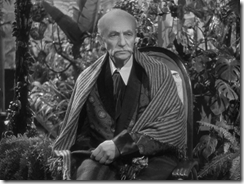
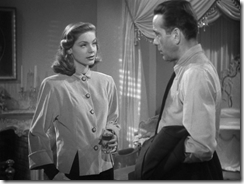
Saved by the butler, Marlowe is led in to see his prospective employer, General Sternwood (Charles Waldron). Beset with age related frailties and an inability to drink, he has Marlowe drink for him. Bluntly eloquent about his lack of morals and that of his daughters, he has a problem with a black mailer that needs handling. It seems little Carmen has gotten herself in trouble and owes a considerable amount of money on lost bets. If that is the real story behind it…
Taking the job for $25 a day plus expenses, Marlowe has a couple of names to consider besides that of the blackmailer, Geiger. There had been another blackmail earlier by someone named Joe Brody that had been handled by an old acquaintance of Marlowe’s, Sean Regan. Oddly enough, Regan is missing much to the dismay of the elderly man.
His oldest daughter, a divorcee named Vivian Rutledge (Lauren Bacall), inserts herself into things by having the butler intercept Marlowe before he leaves. Their meeting leads to classic banter as each fishes for information from the other. But the shamus does find out that Regan was like a son to Sternwood and it piques his curiosity.
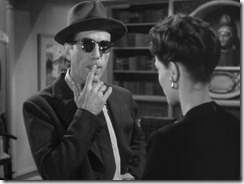
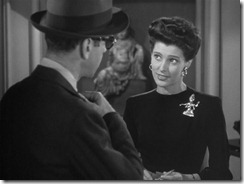
Marlowe does what a good private dick should do and that is research. The Hollywood Public Library provides the trivia he needs to pose as a book buyer to investigate Geiger’s rare books shop. The affectation he puts on doesn’t get him far with the pretty and cold Agnes (Sonia Darrin), but it becomes clear that the shop is not what it appears to be.
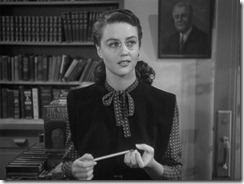
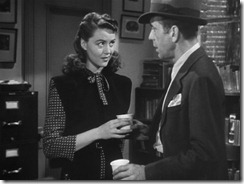
Across the street is a competing book store, one with a most interesting and unnamed gal running it. Dorothy Malone smolders in her brief scene that always stood out to me. She shows that nice and nerdy is no impediment to being very attractive as they share a mutual flirtation while Marlowe watches the other shop. In a film full of gorgeous gals, she tops them all.
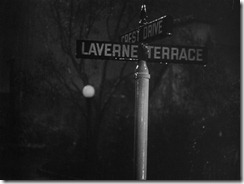
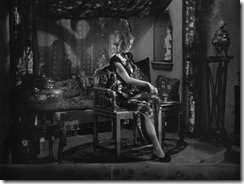
Trailing Geiger leads to his house on Laverne Terrace and soon Marlowe spots a woman arrive then run inside. A check on the car steering wheel registration reveals it is Carmen. Back then, vehicle registrations had to be attached to the steering wheel column and this comes into play more than once as the story unfolds.
Time passes and a tired Marlowe is roused from his boredom by a woman’s scream followed by two gunshots. Before he can do anything, two cars depart in a hurry. The first is a sedan and the second is a station wagon. Why do I mention it? It is a mystery and a lot of clues are being fired at us in shotgun fashion and the theatrical release omits too many explanations.
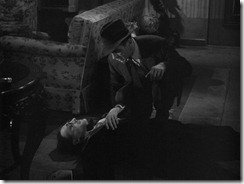
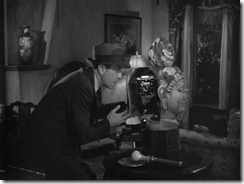
Breaking inside, the private eye finds an oblivious and mildly giggling Carmen plus one very dead Geiger on the floor. No weapon is present but there is a hidden camera, which was pointed at Carmen’s chair. Another discovery seems to offer the promise of more information, but first things first.
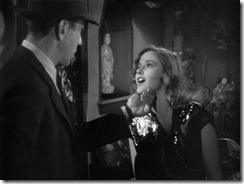
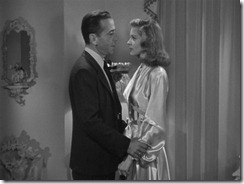
The youngest Sternwood sister is higher than a kite and while never directly explained, it is obvious she has a narcotics problem, probably heroin. Also implied is that she has been posing for dirty pictures. Why else a hidden camera?
Hired to clean up her mess, Marlowe drives her home and instructs the butler that Carmen never left the mansion that night. Vivian is likewise instructed and sparks fly as she argues with Marlowe. Yes, this is a scene inserted to enhance Bacall’s performance and it works well.
Marlowe is now hip deep in the messy situation and while he puts on a brash front, his constant tugging of his ear while puzzled indicates just how confusing the situation really is. It only gets worse after a phone call from his friend, Bernie, at the district attorney's office.
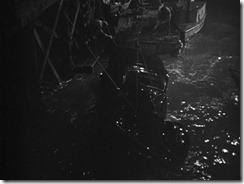
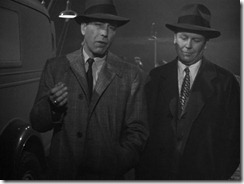
It seems the LAPD have fished a sedan belonging to the Sternwood’s from near a pier – and it has a body in it. Marlowe and Bernie (Regis Toomey) have that casual ease that good friends have and it adds some depth to characters as they discuss what is going on. So who killed Owen Taylor, the chauffeur?
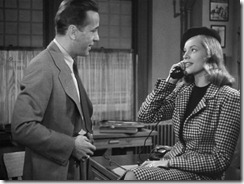

Things keep getting messier as events unfold. Murkier as well, for Mrs. Rutledge is both prying into Marlowe’s case and adding to it when another blackmail attempt is started. It would have been sufficient to have had the normal banter between the now obviously attracted to each other characters, but the phone scene with the two is an absolute delight as they torment a police sergeant on the other end.
Marlowe does seem to have a way with the ladies, as a female cabbie helps him tail a suspect and then gives him her phone number. So far in the film, the gumshoe has had four women hit on him. Not bad for a short guy.
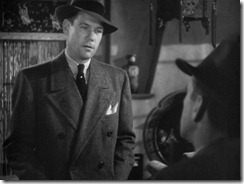
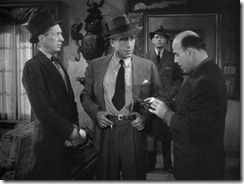
Further trouble enters the picture when Eddie Mars (John Ridgely), a local mobster, finds Marlowe in the company of Carmen at Geiger’s house. Carmen is at her thumb biting best as she is questioned about the murder and you can see the dim cunning of the girl glittering in her eyes. But it is the back and forth between Mars and Marlowe that make the scene terrific fun. It doesn’t hurt he has some interestingly odd henchmen.
One of the best things about The Big Sleep is the witty and intelligent dialogue. I cannot imagine a movie this smart being a hit in the modern day. Too much of the dialogue would go over too many heads.
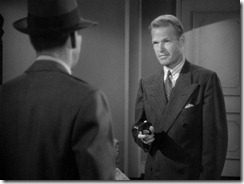
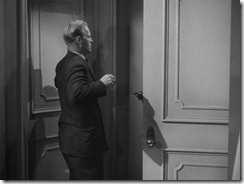
A lot has happened and the new blackmailer has yet to be be dealt with. When we finally meet Joe Brody (Louis Jean Hedyt), we are in for a treat. His small apartment becomes the set of a small stage play as armed people troop in and out. It is a scene hard to convey as it contains plot exposition, wry character moments, dark comedy, and occasional violence. Just watch the movie to see why it is so entertaining.


The amazing thing is we are only half way through the movie by this point.
Marlowe gets his chance to prove how skillful and dirty an opponent he can be as the chain of events started in Brody’s apartment unfold. Some kind of resolution to the events has been come to, but something is nagging the detective. Where is Sean Regan and what does he have to do with all this?
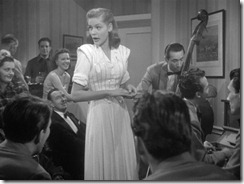
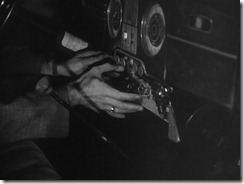
Why is Mrs. Rutledge so eager for him to consider the case closed? What is her connection to Eddie Mars? The questions mount for Marlowe and he will not leave them alone. The Gordian Knot he has been handed and then told to leave alone will either be solved by him or his own undoing.

The 1945 Version
Filming of the movie was done from late 1944 through early 1945 while the war was still on. In early 1946, reshoots and additional scenes were made, so there was at least a year between shoots. That makes the 1946 film a continuity gaffe hunter’s dream.
The Big Sleep had quite a few changes made to it between the versions. As I wrote before, they were done to protect Bacall’s career and while the two films are basically the same, I think much was lost due to that decision.
Various scenes depicting detective work and plot exposition were cut to add in more Bogey and Bacall byplay. The audiences loved the chemistry and I suppose the scandal involved. During the original filming of the movie, the affair between the two destroyed Bogart’s marriage and by the time the second shoot started he had married his mistress, Bacall. Scandal sells, unfortunately.
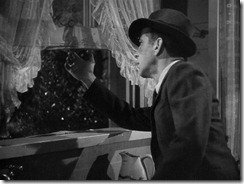
In the original cut, Marlowe explores Geiger’s house and disposes evidence that would have shown Carmen was there. In the process of this, he silently discovers that the killer had broken in through the kitchen window. With Carmen in a stupor on the sofa, he goes through things and finds a set of keys that unlocks the desk, which gives him the cypher book. Those were important moments.
Also, there is no Mrs. Rutledge at the Sternwood mansion when Marlowe hauls Carmen there. Those scenes were reshot to add him carrying Carmen in and having sparks fly with Vivian. Watch for some clumsily looped audio during her office visit. Bacall’s lips do not match the dialogue at one point.
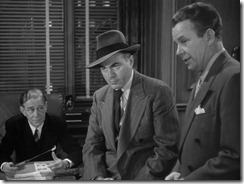
Entire performances ended up cut out of the film. District attorney White (Thomas E. Jackson) and Captain Cronjager (James Flavin) were characters in a very good scene that explained much of what had happened regarding the murders. Bernie also shined in this and you could understand Marlowe’s relationship with local law enforcement a lot better. It is top notch stuff and really helped with the flow of the movie.
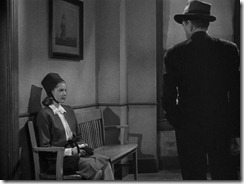

But there was one scene that definitely needed to be replaced and it is the payoff scene with Mrs. Rutledge. For some baffling reason, it was decided that Bacall looked good in the veil pictured above. She didn’t and it was horribly unflattering. The dialogue also lacked zing and needed work, so the scene was replaced by the much superior restaurant one filled with innuendo.
Thoughts
Howard Hawks’ film is very fast paced, bordering on modern in its 1946 cut. The 1945 is slightly slower but still a roller coaster ride. With a focus on characters and performances over camera work and spectacle, the film feels a bit more grounded than a lot of Hollywood fare. There is a gritty and unflinching attitude on display.
I can’t say the cinematography impressed me. It was competent, I suppose. The scene editing is a tour de force, on the other hand.
The feeling of it being war time is subtle, with a reference to “red points” which were meat ration tokens being the most obvious. Rationing was in full effect at the time and the idea that you couldn’t get whatever you wanted is alien to our modern spoiled times. By the way, the whole red points euphemism for bodies is very clever in my opinion.
Of course the big selling point is the incredible chemistry between Bogart and Bacall. That is what most people will remember about this tautly crafted murder mystery. The chemistry is undeniable, infectious, and often a delight to watch.
But for me, it is the sheer smartness of the story and lines that make me like this movie so very much. Having a very mortal and fallible main character in Marlowe also appeals greatly to me. His wry exasperation at all the guns being pulled on him wonderfully conveys how unusual the circumstances he’s fallen into are. Bogey is one of my favorite actors of all time and I think that is because he always brought a feeling of humanity to his portrayals.
Being made back when there was a morality code for movies actually helped the story, in my opinion. With many things only hinted at rather than explicitly explained, it added to the mystery.
There is a lot to like about this film and along with The Maltese Falcon has to be considered the epitome of private eye films. Highly recommended to all adults.
Technical
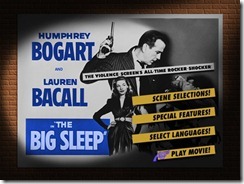
While Warner Bros skimped horribly on the cheap mostly cardboard case, the DVD itself is well produced. It is a two sided disc, with each version occupying one side along with all the extras duplicated. Flipping it over reminds me of listening to 33 1/3 albums when I was young and seems appropriate to the era the movie came from.
The video is the standard 4:3 ratio of the original theatrical release and shows nice contrast. While remastered, it is not restored so expect to see scratches from the preserved film.
Audio is monaural, of course. It is nice and clear, which is important given the machine gun delivery of some of the lines. The score comes through well and never overwhelms the dialogue.
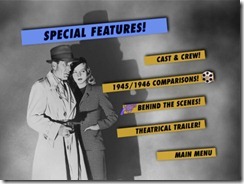
The special features include:
A very brief cast and crew rundown which is not even worth glancing at.
A comparison documentary between the two versions, which is well worth checking out.
Behind the scenes trivia which is an absolute hoot. Even the original author, Chandler, didn’t know who killed the chauffeur!
The very clever theatrical trailer may contain the best lead in ever. It is a little gem in its own right.
BEWARE, HERE BE SPOILERS!!!
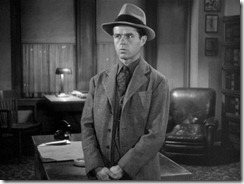
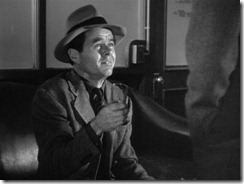
After wrapping up the murders, Marlowe’s determination to find out what happened to Sean Regan gets him in trouble. Even the DA’s office wants him to drop it. But it is an itch he can’t scratch.
Somebody is tailing him, Mars and Mrs. Rutledge are scheming together, and even a beating by goons doesn’t stop the shamus. Unexpected aid from Harry Jones, the guy tailing him, leads things back to Agnes. Her story is made a little more clear in the 1945 version, but she is a very low level gold digger latching on to a new guy in astounding speed.
That poor sucker is Harry, played by Elisha Cook, Jr. You will recognized him from one of his many small parts in film and television over the decades. The little guy has a memorable couple of appearances late in the film and meets a sad end that upsets Marlowe greatly.
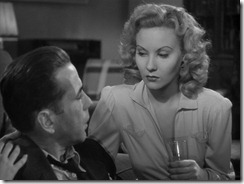
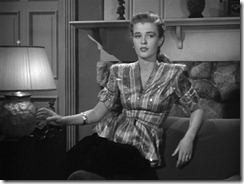
Marlowe may not be a bastion of morality, but his growing outrage against Eddie Mars’ doings begins to drive him into reckless behavior. That lands him handcuffed and tied up when he tracks down Eddie’s wife who was supposed to have run off with Regan. Here we see two different versions as the original scene wasn’t satisfactory and was reshot with a new actress.
The 1945 version had the cold looking Pat Clark playing Mona Mars and the scene played out quite differently. Peggy Knudsen replaced her and was a bit more believable as the kind of gal someone would murder over.
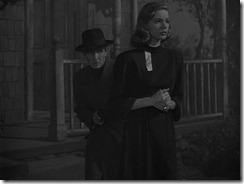
I liked the cowardly cunning of the hitman, Canino (Bob Steele), and also how Vivian fooled him when being used as a human shield. The rat died with a deserved look of surprise on his face.
When the final showdown commences, the shaking and rattled Marlowe is a nice touch of realism. He is human and his bravado has vanished with the death of Jones and having to kill Canino. With him putting on an act of being out of control, Mars is fooled into getting tommy gunned by his own men. Brains, not brawn, wins the day and the girl in the end.
A real mystery to me was why the actress playing Agnes, Sonia Darrin, did not get any billing and essentially vanished from Hollywood. Her part was terrific and she made quite an impression. I eventually found a blog post about her that answered some of my questions.

